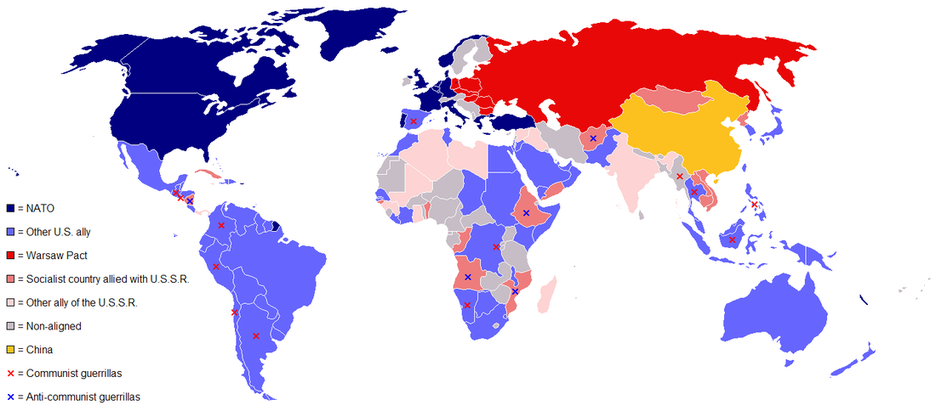BMW And Porsche's China Challenges: A Broader Look At Auto Industry Headwinds

Table of Contents
- Intensifying Competition in the Chinese Luxury Car Market
- Rise of Domestic Chinese Brands
- Changing Consumer Preferences
- Supply Chain Disruptions and Geopolitical Uncertainty
- Navigating China's Unique Regulatory Landscape
- Stringent Emission Standards and Environmental Regulations
- Data Privacy and Cybersecurity Concerns
- Government Subsidies and Incentives
- The Broader Implications for the Global Auto Industry
- Shifting Global Automotive Landscape
- Lessons for Other Automakers
- Conclusion
Intensifying Competition in the Chinese Luxury Car Market
The Chinese luxury car market, once dominated by international brands, is experiencing a dramatic shift. The rise of domestic brands and evolving consumer preferences are creating unprecedented competition.
Rise of Domestic Chinese Brands
Chinese automakers like NIO, Xpeng, and BYD are rapidly gaining market share. Their success stems from several key factors:
- Technological Advancements: These brands are investing heavily in cutting-edge technologies, including advanced driver-assistance systems (ADAS), electric vehicle (EV) powertrains, and connected car features. They are often at the forefront of innovation in specific areas, surpassing some established players.
- Aggressive Pricing Strategies: Domestic brands often offer competitive pricing, making luxury vehicles more accessible to a wider range of Chinese consumers. This undercuts the pricing strategies of traditional luxury brands.
- Strong Government Support: The Chinese government actively supports the growth of domestic automakers through subsidies, tax breaks, and infrastructure development. This creates a significant advantage over foreign competitors.
- Increasing Brand Loyalty: A growing number of Chinese consumers are showing preference for homegrown brands, driven by national pride and a perception of superior understanding of local needs. This shift in brand loyalty is a critical challenge.
Changing Consumer Preferences
Consumer preferences in China are evolving rapidly. The demand for EVs, advanced technology, and personalized experiences is transforming the market.
- Demand for EVs Exceeding Expectations: The Chinese government's push for electrification, coupled with consumer demand, is driving a massive shift towards EVs. Luxury brands need to adapt quickly to this trend to remain competitive.
- Importance of Digital Integration in Vehicles: Chinese consumers highly value seamless connectivity, advanced infotainment systems, and over-the-air updates. Vehicles must be more than just transportation; they need to be integrated into the digital lifestyles of their owners.
- Personalized In-Car Entertainment and Services: Customization is key. Consumers expect personalized entertainment options, voice assistants, and other features tailored to their individual preferences. This necessitates offering a high degree of digital personalization within the car itself.
Supply Chain Disruptions and Geopolitical Uncertainty
Global supply chain issues and geopolitical tensions add another layer of complexity.
- Semiconductor Shortages: The global chip shortage has significantly impacted auto production worldwide, including in China. This has led to production delays and increased costs.
- Trade Wars and Tariffs: Trade disputes and tariffs can increase the cost of imported parts, making it more challenging for foreign automakers to compete.
- Impact of International Relations on Market Confidence: Geopolitical instability can create uncertainty in the market, impacting consumer confidence and investment decisions.
Navigating China's Unique Regulatory Landscape
The Chinese automotive market is subject to a complex and evolving regulatory environment. Compliance is crucial for success.
Stringent Emission Standards and Environmental Regulations
China has implemented increasingly strict emission standards and environmental regulations.
- Carbon Emission Targets: The government has set ambitious targets for reducing carbon emissions, putting pressure on automakers to produce more fuel-efficient and electric vehicles.
- Fuel Efficiency Standards: Strict fuel efficiency standards require automakers to continuously improve the fuel economy of their vehicles. Failure to meet these standards can result in penalties.
- Penalties for Non-Compliance: Non-compliance with environmental regulations can lead to significant fines and other penalties, impacting profitability.
Data Privacy and Cybersecurity Concerns
China's data privacy laws and cybersecurity regulations pose significant challenges for connected vehicles.
- Data Localization Requirements: Regulations may require companies to store data within China, adding complexity to data management and raising concerns about data security.
- Cybersecurity Threats: Connected vehicles are vulnerable to cyberattacks, requiring robust cybersecurity measures to protect sensitive data.
- Government Oversight of Data Collection and Use: The government exercises significant oversight over the collection and use of data by automakers, requiring compliance with various regulations.
Government Subsidies and Incentives
Government subsidies and incentives play a crucial role in shaping the Chinese automotive market.
- Subsidies for Electric Vehicles: The government provides significant subsidies for the purchase of electric vehicles, stimulating demand and favoring domestic brands.
- Tax Breaks: Tax breaks and other financial incentives encourage the adoption of EVs and other environmentally friendly vehicles.
- Infrastructure Development for Charging Stations: Investment in charging infrastructure is crucial for supporting the growth of the EV market.
The Broader Implications for the Global Auto Industry
The challenges faced by BMW and Porsche in China reflect broader trends shaping the global automotive landscape.
Shifting Global Automotive Landscape
China's evolving automotive market is forcing global automakers to adapt their strategies.
- Increased Global Competition: The rise of Chinese brands is intensifying competition globally, requiring innovation and adaptation.
- Pressure to Innovate: Automakers need to continuously innovate to stay ahead of the curve in terms of technology, design, and customer experience.
- Need for Localized Strategies: A "one-size-fits-all" approach is no longer viable. Success in China requires localized strategies that cater to the unique needs and preferences of the Chinese market.
Lessons for Other Automakers
The experience of BMW and Porsche in China offers valuable lessons for other global automakers.
- Importance of Localization: Adapting products and marketing strategies to the local market is crucial.
- Understanding Consumer Preferences: Deep understanding of local consumer preferences and trends is essential.
- Building Strong Partnerships: Collaborating with local partners can provide access to the market, knowledge, and resources.
Conclusion
The China Auto Industry Challenges faced by BMW and Porsche highlight the significant transformations underway in the global automotive landscape. The rise of domestic brands, evolving consumer preferences, and a complex regulatory environment are creating significant headwinds for established players. Understanding these challenges is crucial for global automakers to adapt and thrive. To stay competitive, automakers must embrace localization, invest in electrification and digital technologies, and proactively navigate the regulatory landscape. Ignoring these China auto industry challenges could result in significant losses and missed opportunities in one of the world's most important automotive markets. Successfully navigating these China auto industry challenges will be key to future success in this dynamic and crucial market.

 Anchor Brewing Companys Closure What Happens Next
Anchor Brewing Companys Closure What Happens Next
 U S China Relations Breakdown Tensions And The Specter Of A New Cold War
U S China Relations Breakdown Tensions And The Specter Of A New Cold War
 Fsu Security Gap Fuels Student Anxiety Despite Rapid Police Action
Fsu Security Gap Fuels Student Anxiety Despite Rapid Police Action
 The End Of Ryujinx Nintendo Contact Forces Emulator Shutdown
The End Of Ryujinx Nintendo Contact Forces Emulator Shutdown
 The Karen Read Murder Trials A Year By Year Account
The Karen Read Murder Trials A Year By Year Account
